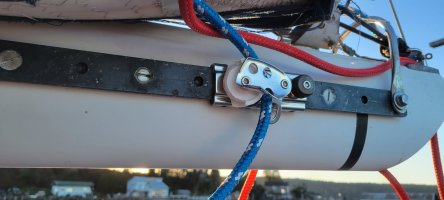p.gazibara
Member III
As mentioned, jib sheet hauled tight, main eased, and she should settle right down with the tiller/wheel lashed.
We found that without the main eased Cinderella could sail right through the backed jib and get underway again. It’s also much better if you are canvased appropriately, too much sail for conditions and you can expect a bit of fore-reaching.
The speed through the water hove-to or fore-reaching is dependent on the wind speed and canvas hoisted. We found that under third reef and storm jib we still managed about 2kn hove-to off the coast of Nicaragua with papagayo winds 12kn gusting 40+. The following day in the same conditions we managed over 5kn going downwind under just the storm jib.
-p
We found that without the main eased Cinderella could sail right through the backed jib and get underway again. It’s also much better if you are canvased appropriately, too much sail for conditions and you can expect a bit of fore-reaching.
The speed through the water hove-to or fore-reaching is dependent on the wind speed and canvas hoisted. We found that under third reef and storm jib we still managed about 2kn hove-to off the coast of Nicaragua with papagayo winds 12kn gusting 40+. The following day in the same conditions we managed over 5kn going downwind under just the storm jib.
-p




